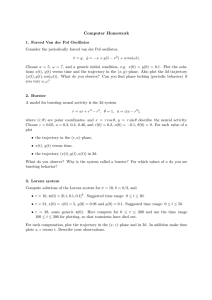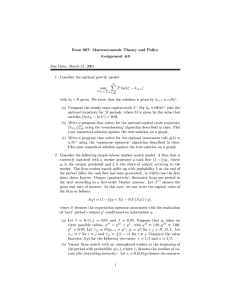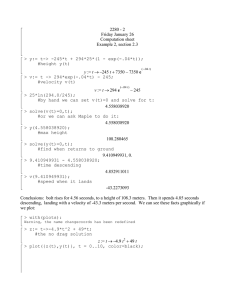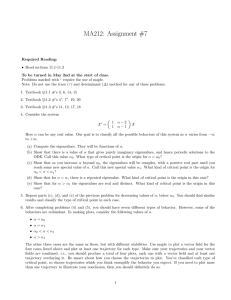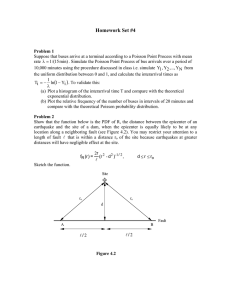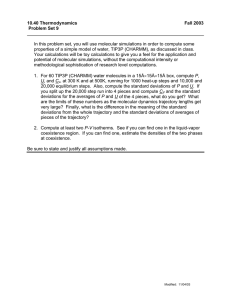Project 1
advertisement
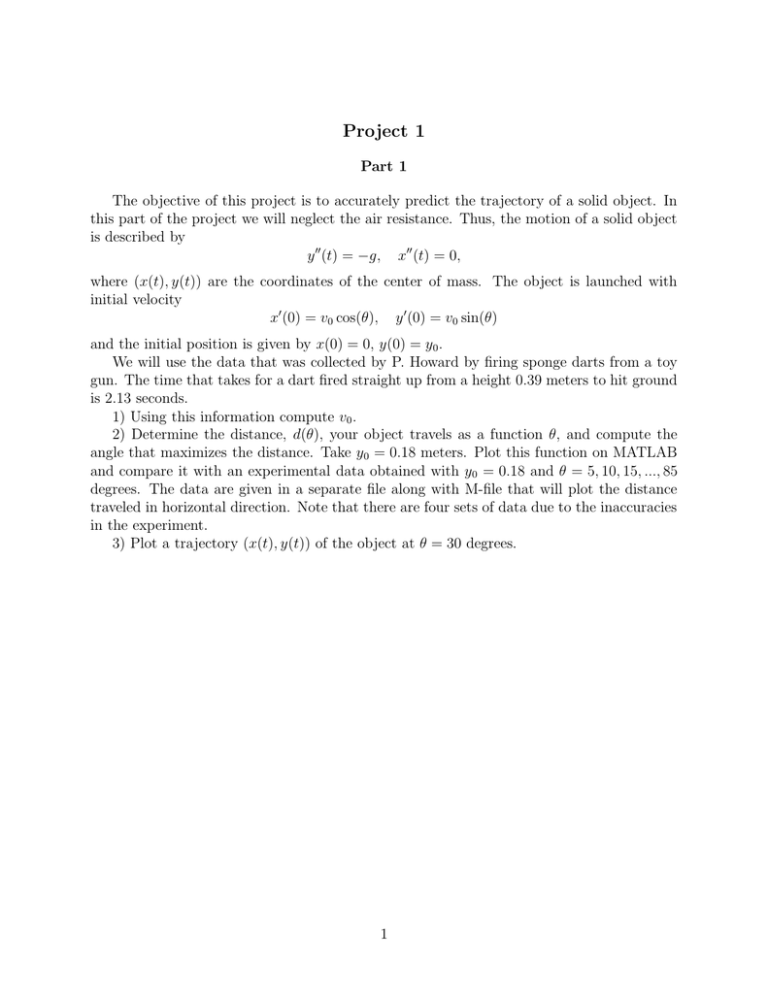
Project 1 Part 1 The objective of this project is to accurately predict the trajectory of a solid object. In this part of the project we will neglect the air resistance. Thus, the motion of a solid object is described by y 00 (t) = −g, x00 (t) = 0, where (x(t), y(t)) are the coordinates of the center of mass. The object is launched with initial velocity x0 (0) = v0 cos(θ), y 0 (0) = v0 sin(θ) and the initial position is given by x(0) = 0, y(0) = y0 . We will use the data that was collected by P. Howard by firing sponge darts from a toy gun. The time that takes for a dart fired straight up from a height 0.39 meters to hit ground is 2.13 seconds. 1) Using this information compute v0 . 2) Determine the distance, d(θ), your object travels as a function θ, and compute the angle that maximizes the distance. Take y0 = 0.18 meters. Plot this function on MATLAB and compare it with an experimental data obtained with y0 = 0.18 and θ = 5, 10, 15, ..., 85 degrees. The data are given in a separate file along with M-file that will plot the distance traveled in horizontal direction. Note that there are four sets of data due to the inaccuracies in the experiment. 3) Plot a trajectory (x(t), y(t)) of the object at θ = 30 degrees. 1
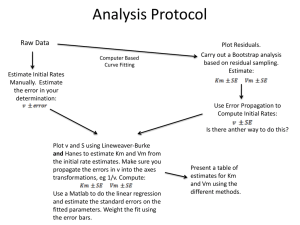
![Let x = [3 2 6 8]' and y =... vectors). a. Add the sum of the elements in x to... Matlab familiarization exercises](http://s2.studylib.net/store/data/013482266_1-26dca2daa8cfabcad40e0ed8fb953b91-300x300.png)
